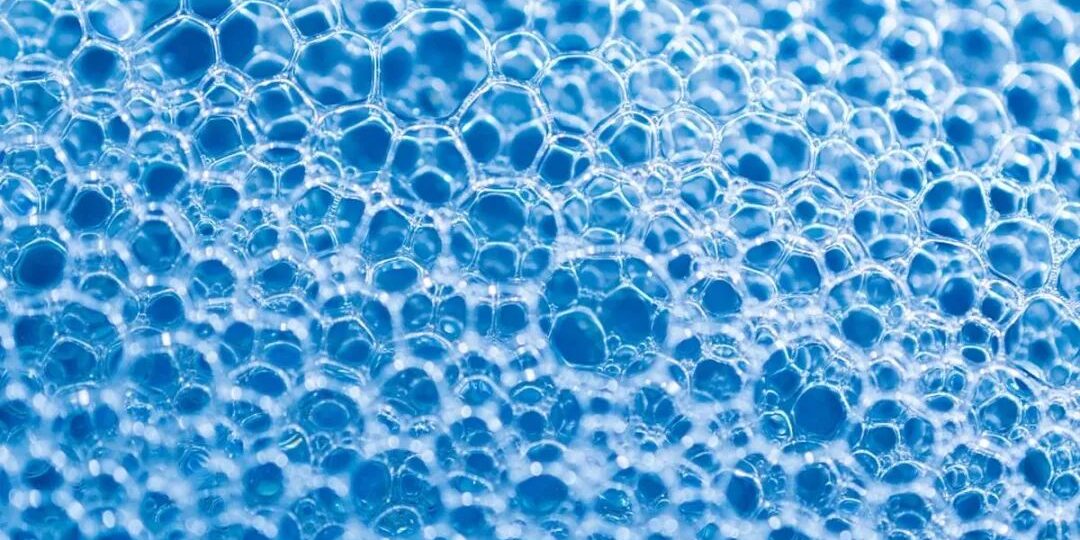The defoaming process of defoaming agent and its advantages such as alkali resistance and acid resistance are shown
Defoaming agents, also known as anti-foaming agents, will produce many harmful foams during industrial production and require the addition of defoaming agents. It is widely used to remove harmful foam produced in the production process of latex, textile sizing, food fermentation, biomedicine, coatings, petrochemicals, papermaking, industrial cleaning, sewage treatment and other industries. Defoaming and suppressing foam in various sewage treatment and various industrial water systems.
The origin of the defoaming mechanism of defoaming agents is to sprinkle higher alcohol or vegetable oil on the foam. When it dissolves into the foam liquid, it will significantly reduce the surface tension there. Because these substances generally have low solubility in water, the reduction in surface tension is limited to the local area of the foam, while there is almost no change in surface tension around the foam. The part with reduced surface tension is strongly pulled around, extends, and finally breaks.
Defoaming agents added to the foam system will diffuse to the air-liquid interface, making it difficult for surfactants with foam-stabilizing effects to restore film elasticity. The rate of foam discharge can reflect the stability of the foam. Adding a substance that accelerates foam discharge can also play a defoaming effect. The hydrophobic solid particles on the bubble surface will attract the hydrophobic end of the surfactant, making the hydrophobic particles hydrophilic and entering the water phase, thus playing a defoaming effect.
Certain low molecular substances that can be fully mixed with the solution can solubilize the bubble surfactant and reduce its effective concentration. Low molecular substances with this effect, such as octanol, ethanol, propanol and other alcohols, can not only reduce the concentration of surfactant on the surface layer, but also dissolve into the surfactant adsorption layer, reducing the closeness between surfactant molecules. degree, thereby weakening the stability of the bubble.
For the double electric layer of surfactant in the foam to interact with each other to produce a stable foaming liquid, adding ordinary electrolytes can collapse the double electric layer of the surfactant to play a defoaming effect.
1. Alkali-resistant defoaming agent
It can defoam quickly and suppress foam for a long time under high temperature and strong alkali conditions. Good stability, low dosage, high efficiency, no oil bleaching; widely used in papermaking cooking black liquor treatment, strong alkali refining agent in textile printing and dyeing industry, cleaning agent under strong alkali conditions and other high temperature and strong alkali aqueous systems Defoaming.
2. Acid-resistant defoaming agent
It is composed of fatty acid esters, fatty amides and other substances, and is widely used in wet phosphoric acid, titanium dioxide production, boric acid production and other strong acid systems.
3. High viscosity foam defoamer.
This product is an efficient compound defoamer developed for the foam produced by papermaking pulping black liquor, chemical mineral processing, and special chemical reactions. It has the characteristics of high viscosity, fine foam, and difficulty in elimination. Foaming agent.
4. The coating defoaming agent contains a variety of high-quality defoaming ingredients, so it has a wide range of applications.
It is especially suitable for eliminating foam in styrene-acrylic latex, ethylene-propylene latex, pure acrylic latex, vinyl acetate latex and other systems.
5. Papermaking defoamer can effectively control pulp and foam overflow and improve papermaking quality.
It is widely used for defoaming in papermaking systems, and can also be used for defoaming in papermaking sewage treatment, antifreeze, and distillation systems.
6. Cement mortar defoamer can effectively control the generation of foam in the cement mortar system, making concrete components denser and brighter.
7. Oilfield industrial defoamer can effectively control the generation of internal foam in the oilfield industrial process and improve oil production efficiency.
8. For cleaningIt can effectively control the foam generated by the cleaning agent.
9. Cationic system defoamer can effectively control the generation of foam containing cationic systems.
It is widely used in cationic rosin gum and cationic cleaning agents for papermaking. It can also be used for defoaming in papermaking sewage treatment, antifreeze, and distillation systems.
10. The high-efficiency fermentation defoaming agent overcomes the shortcomings of ordinary silicone defoaming agents such as poor high temperature resistance and short foam suppression time; it can eliminate the foam accumulated in the fermentation tank as quickly as polyether. At the same time, this product has polyether properties. The advantage of time-based foam suppression is unmatched by ether.







